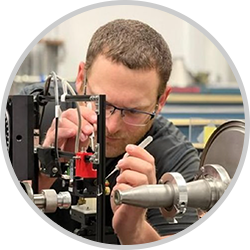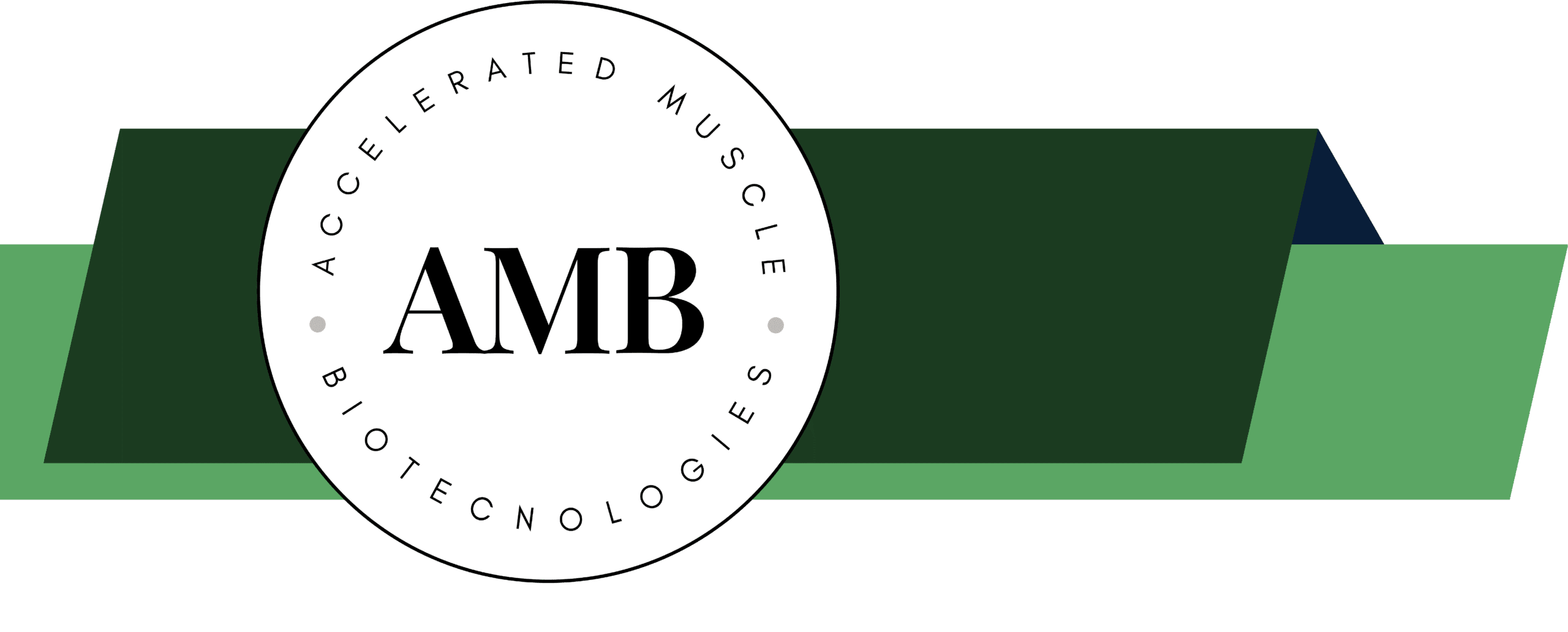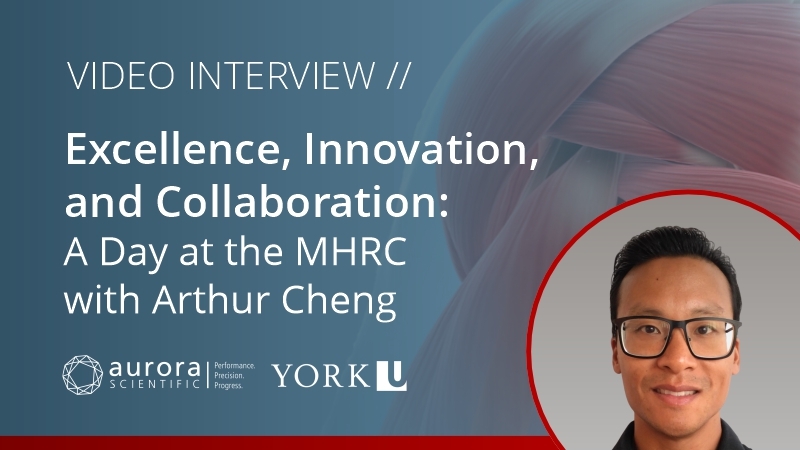Building Bridges in Muscle Research: AMB’s Innovative Approach and Partnership with Aurora Scientific
In February this year, Accelerated Muscle Biotechnologies and Aurora Scientific formed a strategic partnership, combining expertise in muscle physiology research and reliable instrumentation and manufacturing to support it.
Hear from Anthony, Khoi, and Aurora Scientific to learn more about AMB, this new found partnership and their goals for the future below!
About Accelerate Muscle Biotechnologies (AMB)

Anthony Hessel, PhD
Co-Founder & CEOAnthony has been a muscle physiologist for over 15 years, specializing in the inner workings of heart and skeletal muscle sarcomere interactions and muscle performance. Currently residing in Germany, he works with small angle x-ray diffraction using particle accelerators called synchrotrons. His overall goal is to make this technique more accessible to researchers.
Khoi Nguyen, PhD
Co-Founder & CTOKhoi has a background in mechanical engineering and delved into muscle mechanics during his post-doc, where he focused on MRI imaging. As the primary image and signal processing expert, he looks forward to making this x-ray diffraction technique available to more labs, so that they can obtain these exploratory data sets for their work.

How did AMB come to be?
The AMB partnership begins with a fortuitous twist of fate—and a well-timed tweet. When Anthony’s research at Argonne National Laboratory was put on hold due to a major beam line upgrade, he found himself searching for an alternative synchrotron to continue his work. While living in Germany, he discovered a facility in Hamburg that had all the capabilities to make his beam line dreams come true. It was there that colleagues encouraged him to think bigger: What if he could help other researchers collect their own data using the x-ray diffraction setup he had established?
That’s when fate intervened in the most modern way. Anthony posted on Twitter inquiring about assistance for software development, and at that exact moment, Khoi was exploring research-based opportunities for his next career move. When their respective PIs—who happened to be friends—connected them over the tweet, the match was instant. In what can only be described as scientific serendipity, their complementary skills and aligned vision came together.
What is MyoSAXS and its purpose?
MyoSAXS stands for muscle small-angle x-ray diffraction scattering—a cutting-edge technique that reveals the hidden architecture of muscle at the molecular level. The process requires a particle accelerator that generates x-rays, which are then aimed at muscle tissues. The resulting diffraction pattern acts like a molecular fingerprint, telling us about the proteins within the muscle and providing detailed insights into the “motor” or fundamental building blocks that make muscle contraction possible.
Anthony explained to us: “You can think of it like your car. When the engine has a problem, you bring it to the mechanic, you open up the hood, and you look at the engine, maybe try to turn on the car and move the steering wheel. So, you’ve diagnosed a problem this way. This is what we do, but with muscles and particle accelerators.”
SAXS offers a perspective into the molecular inner workings of living muscle, with applications spanning the research landscape. By revealing the molecular structure underlying critical scientific questions. The result is invaluable: unique information at the sarcomere level that shows exactly what’s happening inside the muscle—data that provides evidence needed to advance everything from drug development to disease understanding.
What is the goal of AMB?
AMB’s mission is ambitious yet clear: to transform a niche technology used by only a handful of labs into a widely accessible tool with long-term impact. By democratizing access to MyoSAXS, AMB aims to empower researchers across the globe to answer questions that were previously out of reach—accelerating discoveries that could reshape our understanding of muscle function, disease, and treatment.
As Anthony puts it, “X-ray diffraction is just another tool in the tool belt of muscle scientists to look at what’s happening, to define whatever they are trying to characterize in tissue.”
Khoi said it perfectly, “AMB’s team members are scientists first.”
Unlike traditional contract research organizations, AMB maintains its roots in academia. Team members continue conducting their own research alongside client work, ensuring they stay at the cutting edge of the field. More importantly, AMB doesn’t just work for clients—they work with collaborators as equal partners. This is a reflection of their genuine passion for scientific discovery.
How did the partnership between AMB and Aurora Scientific come about?
The alignment runs deep. Aurora Scientific shares AMB’s belief in advancing research through strong communication—highlighting quality science from labs around the world. What resonated with Aurora was AMB’s dedication to generating reproducible scientific outcomes through standardized methodologies. Aurora Scientific recognizes that consistent, reliable results come from these standardized methods. For AMB, the collaboration means access to high-quality instrumentation essential to making meaningful contributions to the scientific field. It’s a partnership built on engagement, shared vision, and a commitment to elevating muscle research globally.
AMB is setting out to create the next generation of muscle mechanics tools, and Aurora Scientific is the ideal partner to make it happen. Aurora’s deep engagement with their customer base gives them unique insight into the challenges researchers face in real-world experiments—knowledge that will directly inform the solutions AMB and Aurora develop together.
The ultimate goal? Increasing accessibility to as many labs as possible through commercially available options that don’t compromise on quality.
What is the BioVault?
Stay tuned for our next Newsletter…
We can’t wait to share more about our newest innovation—developed in collaboration with AMB—designed to make muscle mechanics instruments more accessible than ever before!
Explore Interviews, Webinars, & More!
NASA’s SpaceX CRS-29 launched on November 9th carrying the Rodent Research-20 (RR-20) payload, the contents of which will be studied by Brock University’s Dr. Val Fajardo and his team using Aurora Scientific equipment upon its return.
Interviewing Dr. Arthur Cheng at the Muscle Health Research Centre (MHRC), York University, whose lab primarily investigates the mechanisms of skeletal muscle weakness and fatigue.
System setup guide for the 1200A in-vitro muscle test system.






